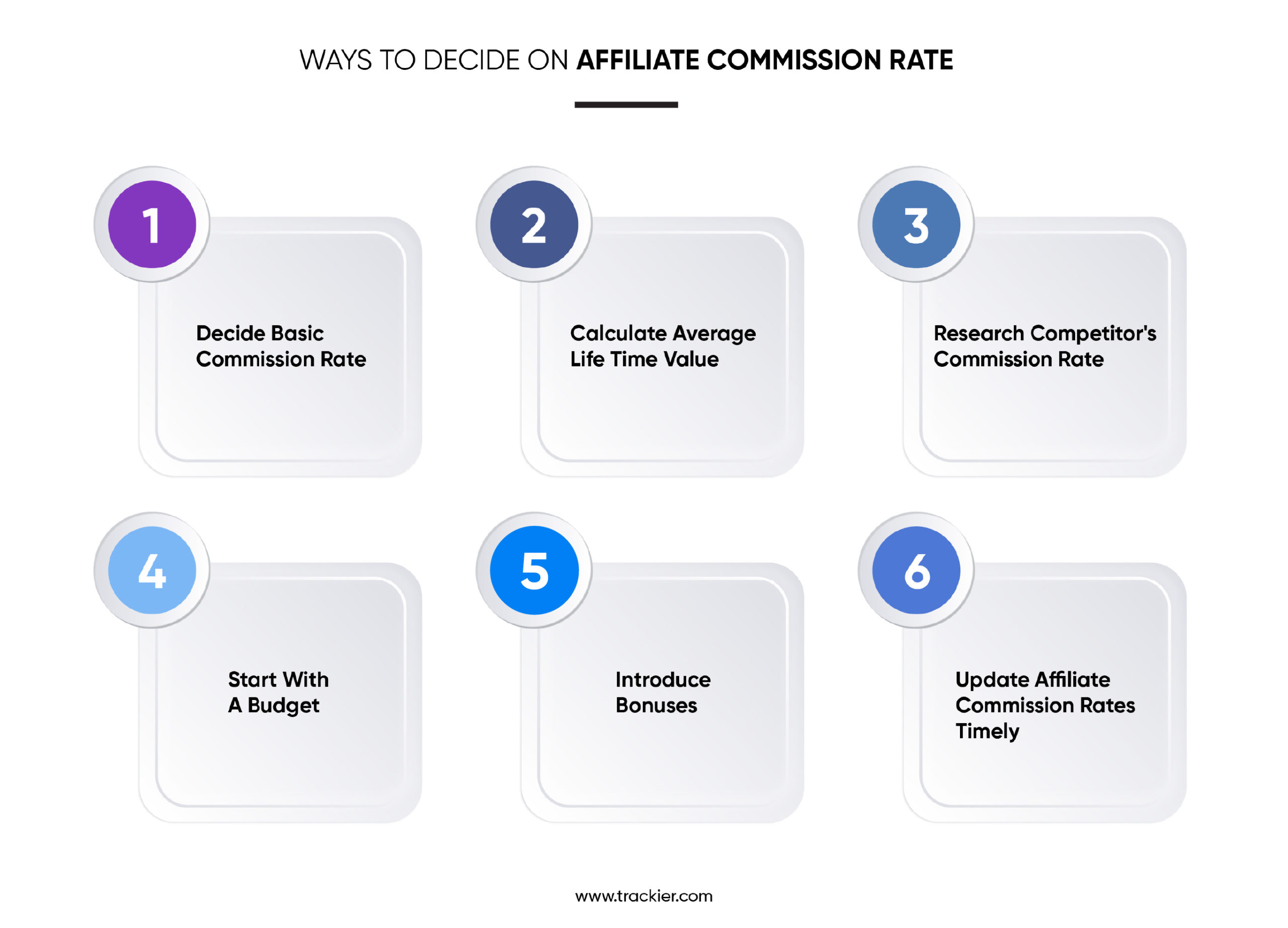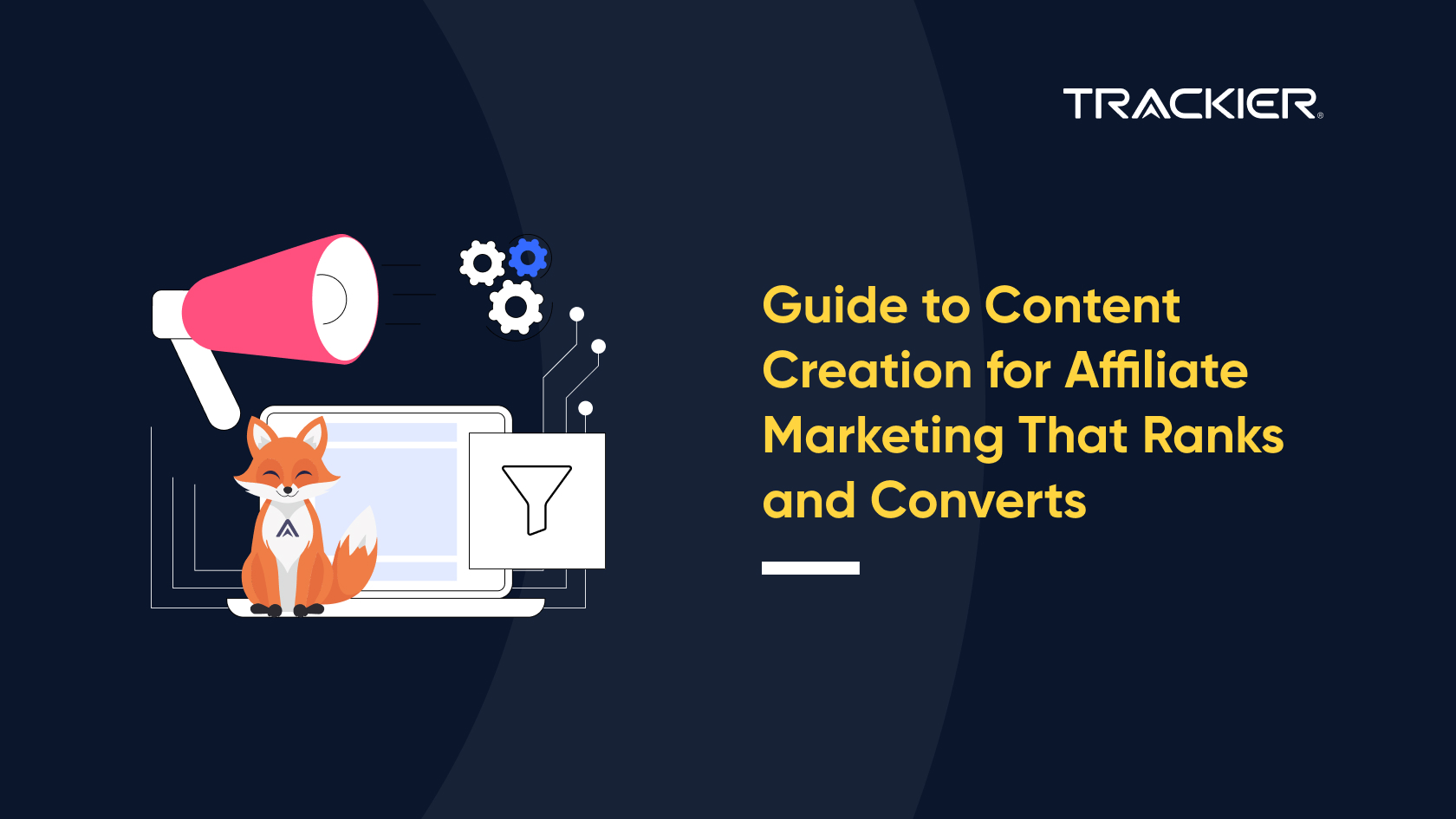According to a study conducted, affiliate marketing is used by roughly 81% of firms. Its popularity is a result of its efficiency as well as the ability to assess the campaign’s success and charge for concrete outcomes. Calculating the commission rate can be difficult, though, if you plan to create an affiliate network.
If the commission rate is too low, no one will promote your business, while a rate that is too high could result in a loss.
Sadly, there isn’t a straightforward, all-encompassing method that will help you determine the ideal commission rate for your affiliate programme.
In order to determine your affiliate commission rates and what will work best for your budget, your industry niche, and your particular programme, you should take into account a wide range of variables because every business is different.
Additionally, bear in mind that the affiliate commission rate only accounts for a percentage of the expenses associated with your affiliate programme. You need to keep track of all the expenses because the main objective is to make as much profit as you can.
We hope that this blog will assist you in choosing the appropriate commission rate that will draw in and keep the top affiliates for the success of your campaign.
1. Decide The Basic Commission First
The price itself is a simple choice, cash reigns supreme. While some e-commerce businesses may be suitable to get down with commissions given in-store credit, the most charming reward is still cash.
Next, consider percentage vs. flat-rate commissions. Do you want your Affiliate commission rate to be a percentage of each sale or fixed amount for each transaction?
This is the first and most important step in calculating your commission rate. In Affiliate programs, the typical percentage commission rate ranges from 5 to 30%.
Fixed-amount commissions, on the other hand, may work effectively for your business if you only sell many specific products, each with a destined price.
2. Calculate the average lifetime value of your guests.
What’s the maximum amount you can pay your affiliates? Your profit perimeters will determine this. Profit perimeters, on the other hand, are delicate to prognosticate and subdue to volatility.
Use your average client lifetime value (CLV) as a companion to keep effects simple.
Simply said, CLV is the amount of Money a typical customer brings in throughout their relationship with you, minus the usual costs of carrying that client. The advanced your average client continuance value gets, the longer your client stays with you.
Knowing your CLV will help you in determining an affordable and sustainable commission rate for your company. Also, you can consider the introductory formula deduced to check out
Average CLV = Average periodic profit earned from a client * Average number of years someone has been a client – Original cost of client accession per client
3. Research your competitors’ commission rates.
Some of your direct competitors are most likely already recruiting affiliates. Even if they aren’t, other companies catering to a similar audience are vying for the same affiliates.
There should be at least two direct competitors with well-established affiliate programs. You can also find at least one company that isn’t directly competing with you but serves the same niche and audience (and possibly attracts similar affiliates).
Examine their affiliate program’s commission rates before establishing your own appealing, competitive commission.
4. Always Start With A Budget You Can Afford
Now that you’ve anatomized your client’s lifetime value and other brand’s affiliate programs, it’s time to set your Affiliate commission rate.
Pinpoint a range of commission rates that are both enticing compared to challengers and affordable for your business. Also start with a commission rate on the lower end of that range.
Why? Because it gives you a chance to increase your commission rate later on, while also putting your business needs first.
Affiliates won’t be worried if you increase your commission rate later – it only adds to their earnings. But if you start with a commission rate that you’re later forced to drop, you’ll presumably lose several Affiliates (and have a harder time retaining new bones).
In addition, starting with lower Affiliate commission rates gives you the freedom to test out strategies or higher commission categories for your Affiliates ( more on these in the coming section).
And since a lower commission rate means redundant gains for your brand, you’ll have further room to set up elevations for your Affiliates to offer their website users.
You’ll also be suitable to give more traditional deals and abatements to prospective guests, or to engage in other types of marketing, like a referral program.
5. Introduce Bonuses And Other Rewards To Your Affiliates
Bonuses are a great way to reward top affiliates while also keeping your program interesting and appealing to everyone. Bonuses from commissions can be used in a variety of ways, including:
If affiliates meet defined lifetime income targets or are in the top 10% of your affiliates, consider thanking them with commission incentives (or nice gifts).
Offer a “streak bonus,” in which meeting a set level of monthly or quarterly sales gets you a special commission rate increase or a one-time gift.
Create a tiered compensation structure so affiliates who meet certain lifetime sales levels get a permanent earnings boost.
Also, if your product or service is subscription-based, the recurring commission is a simple benefit to offer.
6. Keep Updating The Affiliate Commission Rate As Per The Need
You do not need to fix or be dogmatic about the affiliate commission. It’s wise to examine your commission rate to keep affiliates engaged and motivated.
By regularly checking and updating your commission rate, you can ensure that you are always one step ahead of the competition.
Any changes to commission rates do not have to be permanent. A simple way to change up your commission is to identify a month or time where you can afford to offer a temporary commission bonus, or where a temporary bonus could potentially increase sales by the maximum amount.
Conclusion
If you follow these steps, you’ll be well on your way to deciding on an affiliate compensation rate – and commission terms – that will encourage affiliates to continue marketing your products or services.
To properly keep affiliates motivated, you must pay out commissions promptly, regardless of the rate and terms you set.
There are affiliate software solutions that automate payouts and ensure that your affiliate compensation rates are paid on time. Also, you can use our performance marketing software to manage your affiliate and track their results at ease.









